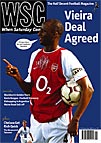 A side rooted in London’s Bangladeshi community will be playing four rungs short of the Conference this season. Matthew Brown traces the rise of Sporting Bengal
A side rooted in London’s Bangladeshi community will be playing four rungs short of the Conference this season. Matthew Brown traces the rise of Sporting Bengal
As footballing milestones go it probably won’t rank up there with the first FA Cup final or England’s World Cup win, but the acceptance of an east London amateur team into the ranks of the Go Travel Kent League marks a breakthrough of no little significance for one section of the footballing fraternity.
When Sporting Bengal United FC, from Mile End in the London borough of Tower Hamlets, line up against teams such as Maidstone United and Beckenham Town this season, they will become the first predominantly Asian football team to play at such a high level of the non-league game. The Kent League is one rung down from the Ryman League and a significant step up the football pyramid from Bengal’s previous position in the London Intermediate League.
The club, formed in 1996, are essentially a representative side for the Bangladeshi Football Association UK, drawing many of their players from the 29 teams in the League Bangla held in the summer. They are regarded as the top Asian team in the country, after winning the annual Khalsa Football Federation’s national tournament for Asian clubs at Ibrox last September. And in April this year they became only the second Asian-based team to be awarded senior status by the Football Association, meaning they can enter the FA Cup and FA Vase in 2004-05.
“Just the thought of a side from the Asian community playing in the FA Cup is amazing,” says Suroth Miah, a former player and current chair of the club. “This promotion is very important for us, but it’s more important for the Asian community. Young Asians will see they can play in the mainstream football system and other Asian teams will think that this level is not that far beyond them.”
Bengal started in the London Asian Football League but, after winning the double two years in a row and the league three times, they soon realised they needed to test themselves against tougher opposition. It was the sort of move much encouraged by those seeking to shift Asian football and Asian footballers from their relatively marginal, community-based, position.
Miah is all too aware of the various “Asians in football” campaigns and initiatives that have bounced into being over the last ten years or so. Indeed, he’s involved in the FA’s working group on the subject and Sporting Bengal has links with West Ham’s Asian players’ programme. With his club’s ascendance and the emergence of a smattering of Asian professional players, led by Michael Chopra and local Tower Hamlets boy Anwar Uddin, Miah believes “the time has come for Asian football”. “The World Cup last year showed that Asian players can live with the best,” he says. “You don’t need to be a six-foot-plus blond to play good football.”
Although lots of Asian youngsters now get picked up by professional clubs’ academies, Miah still believes there’s “something going wrong” at that level. “Pro clubs have got to change their thinking,” he says. “Just because a lad is five foot eight or nine doesn’t mean they can’t be a top player. We’ll probably be the smallest team in the Kent League, but we’ll be one of the most skilful and the quickest.”
Indeed, Bengal has players of some pedigree, including two who were on Arsenal’s books for seven years, another who was at Burnley, plus a handful who have played in the Ryman League and for professional teams in Bangladesh. Sporting Bengal is more than just a team, though. It also trains members to become coaches so they can work with local Asian kids, and, in time, Miah hopes to set up various Sporting Bengal youth teams. “One of our main aims is to produce a player who will break through into professional levels,” he says. “It won’t happen overnight so we’ve got to start encouraging kids from a young age.”
Having a first team that plays with the big boys will certainly help, even if Kent has had to stretch its boundary northwards across the Thames to fit them in. The club’s also had to make a few adjustments – six yards have been added to the 104-yard pitch at Mile End Stadium, for example, and some of the changing facilities have been upgraded – all generously paid for by the local authority.
As for the Kent League’s indigenous football community, it seems keen to welcome the latest sign of the slow coming of Asian football. “I think it’ll give their league a boost,” says Miah. “The interest has already gone up and clubs are anticipating a rise in crowds. We’re a marketable product, but we’re not just a token gesture.”
Next stop, the Ryman.
From WSC 199 September 2003. What was happening this month